Do you ever feel limited by the built-in sounds on your MIDI keyboard or electric guitar when playing live?
Using MainStage’s powerful MIDI integration features, you can control a universe of software instruments, effects, and more from MIDI controllers.
Let’s dive in to see how flexible MIDI control in MainStage can supercharge your live performances.
Can MIDI be controlled in MainStage?
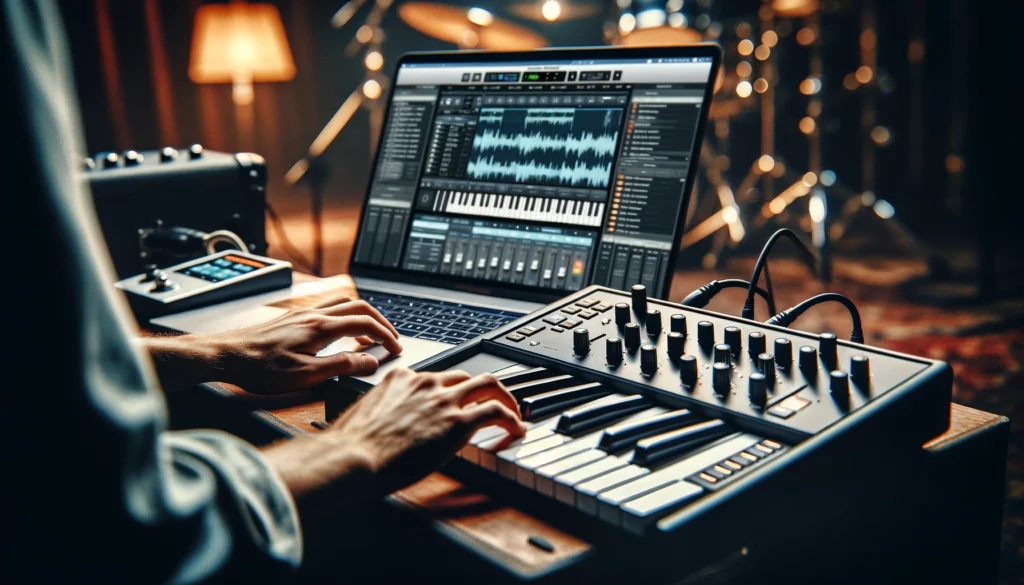
Yes, MIDI devices have extensive control capabilities when used with MainStage.
You can map MIDI signals from keyboards, pedals and control surfaces to parameters within MainStage’s software instruments and effects, enabling hands-on sound manipulation.
We’ll explore MainStage’s versatile MIDI functions more below.
What is MIDI?

MIDI (Musical Instrument Digital Interface) is a technical standard protocol that was developed in the early 1980s to enable electronic instruments, computers, smartphones, and other devices to connect with each other and communicate.
The MIDI protocol made it possible for devices to transmit and receive various types of performance data between one another through MIDI cables, including note messages, controller messages, clock signals for synchronization, and tempo changes.
This interoperability allowed users to control one electronic musical device from another, laying the groundwork for computer-controlled instruments used in music production and live performances.
With MIDI connectivity, keyboard players could play a MIDI keyboard controller and have the sound come out of a PC running synth software, rather than the keyboard itself, opening up new creative possibilities.
The data transmitted via MIDI includes commands that can trigger musical notes, change parameters like volume or vibrato depth on a synthesizer, and synchronize tempo between devices like sequencers, drum machines, samplers and so on.
MIDI was a revolutionary development for electronic music and the electronic instruments industry, enabling the separation of the controller from the sound generator for the first time.
This allowed much more flexibility in configuring instruments and devices.
MIDI connectivity made it possible to control multiple instruments from a single master controller keyboard or interface.
It ushered in a new era of computer-based recording and production, synthetic orchestration for television and film scoring, andlive electronic music performance rigs.
What is MainStage?
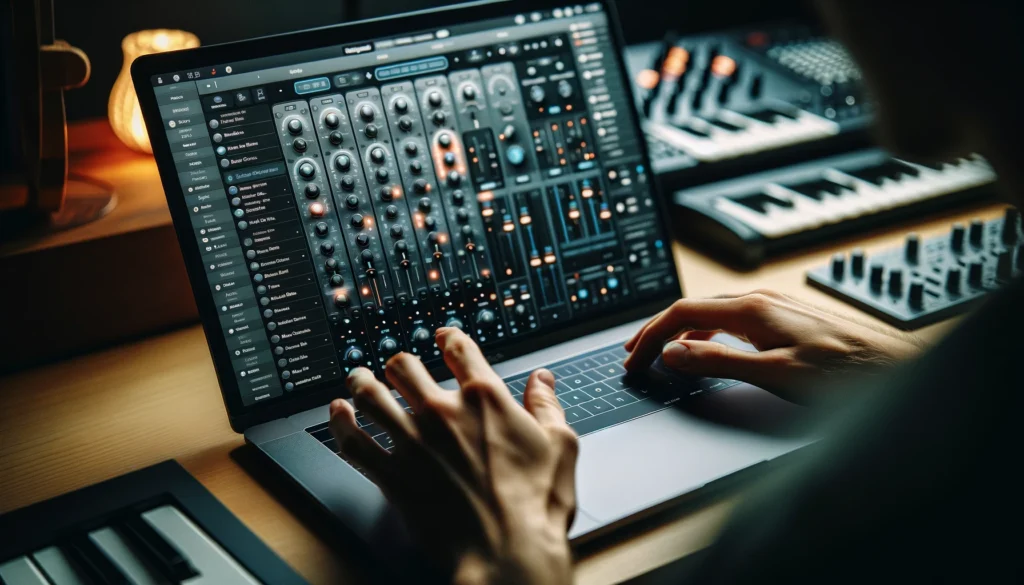
MainStage is a dedicated live performance application that was developed by Apple Inc and first released in 2007.
It is designed specifically for use with keyboards, guitars and other MIDI instruments in a live performance setting.
MainStage allows the user to layer multiple software instruments, audio effect plugins, and configure flexible MIDI routing schemes between different devices, all within a clean, intuitive graphical user interface.
This enables musicians to replicate complex, multi-channel instrument rigs entirely in the digital domain, placing effects and synth tones under precise, programmatic control, operated from traditional performance instruments like MIDI keyboards or MIDI guitars.
For keyboard players, MainStage transforms your Mac computer into a highly customizable virtual instrument.
Users can build layered keyboard tones comprising several software synthesizers, samplers, electric pianos and more exotic instruments.
You can then add effects like delays, distortions, modulate these sounds in real-time with whammy bars or sustain pedals, all from the familiar interface of your MIDI keyboard controller.
This gives keyboardists tremendous flexibility and sonic options compared to limited built-in sounds on stage pianos.
For guitarists, similar principles apply – you run guitar through USB or MIDI Pickups into software amp/pedalboard rigs designed in MainStage instead of physical guitar amps.
This allows quick switching between radically different guitar sounds not possible with analog gear.
MainStage sessions contain configurable channel strips where you load plugins, design sounds, set MIDI assignments, mixing/effects and save as presets.
You can map hardware controls like sliders, knobs, buttons and pedals on MIDI keyboards, foot controllers to various software parameters in your MainStage workspace for hands-on dynamic sound tweaking during live playing.
Multiple keyboardists in a band can have their own assigned channel strips.
With its intuitive workflow tools, MainStage has become hugely popular for performing electronic artists, function bands, church worship teams and more who need to recreate dense, heavily-produced studio sounds in a live context.
Using MIDI Controllers with MainStage
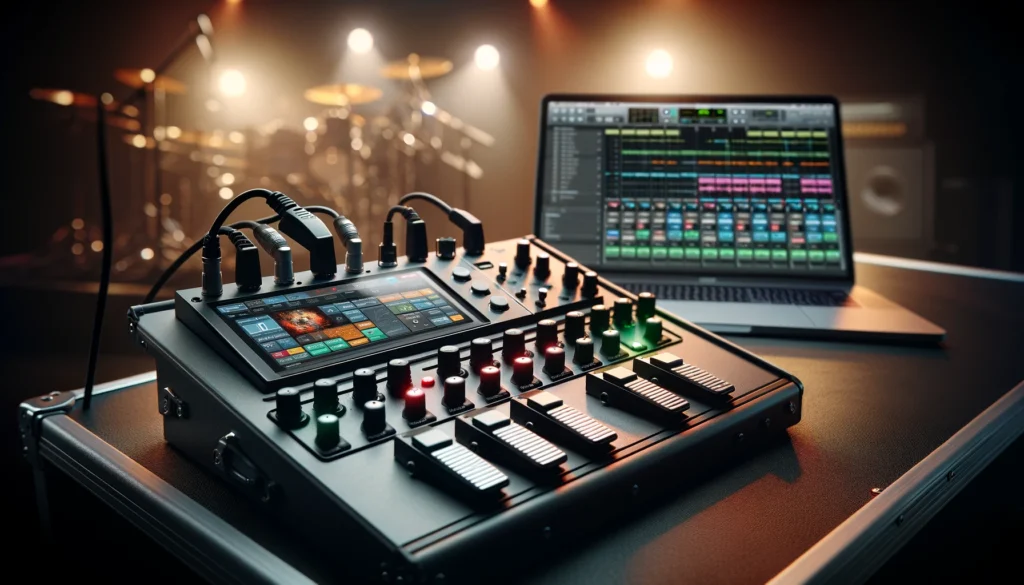
MainStage was designed from ground up to offer deep integration with MIDI controllers.
It has extensive support for linking industry-standard MIDI keyboards, pedalboards, mod-wheels and other MIDI gear to software instruments and effects parameters inside MainStage.
This allows you to manipulate sounds and adjust mixing levels on the fly as you perform, using tactile hardware controls operated by your hands and feet.
Manipulating synth tones or guitar effects using physical knobs, sliders and buttons gives you a level of intuitive, musical control that is impossible to achieve purely with a mouse or touchscreen.
Nearly all MIDI keyboards, from basic models like M-Audio Keystations to high-end workstation keyboards like Nord Stage, Roland Fantom or Korg Kronos can be used to control MainStage’s software instruments.
Beyond triggering notes and sending CC data, you can map hardware controls on your MIDI keyboard to tweak filters, apply effects or transpose notes as you play.
Keyboardists use this capability to sculpt sounds in expressive ways during live playing that go beyond what you can achieve just triggering fixed presets.
Most MIDI keyboards connect to your Mac via simple USB cables rather than the traditional 5-pin MIDI DIN connections.
Modern high speed USB-MIDI connectivity offers wider controller recognition and reduced latency compared to legacy MIDI interfaces when using MainStage.
For guitarists, there is similar hands-on control integration possible between MIDI pickup systems from leading brands like Roland, Axon, Fishman and dedicated guitar recording interfaces like Line 6 POD HD500X to effects and amp modeling software hosted in MainStage.
Using a MIDI guitar, the guitarist can switch between various guitar/amp/pedalboard sounds configured inside MainStage by stepping on a connected MIDI footswitch from brands like Behringer, Roland or FCB1010.
This allows quick handsfree patch changes between verse, chorus or solo tones.
The same footswitches help trigger effects like delay, reverb or harmonizer within guitar presets.
Assigning MIDI Channels
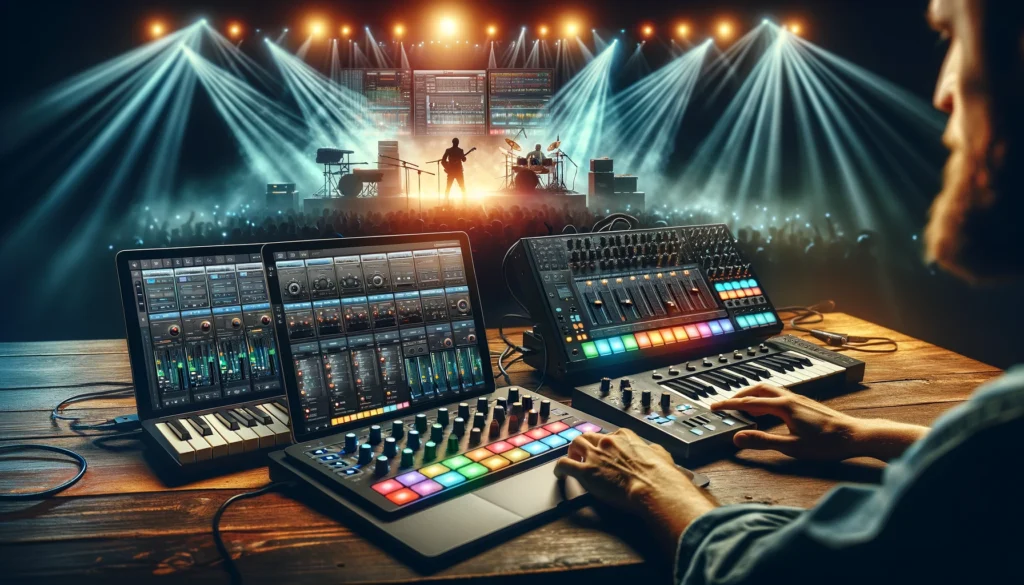
When building complex MainStage concert rigs comprising multiple keyboards, synthesizers, laptops and outboard MIDI gear, it is important to correctly assign MIDI channels to ensure smooth communication between connected devices.
By default, most MIDI keyboards transmit note and controller data on MIDI Channel 1.
However in a band context where multiple keyboardists trigger software instruments hosted on a central Mac computer, assigning a different MIDI channel (1 to 16) prevents data collisions where multiple unintended instruments could trigger from one keyboard.
This principle applies to MIDI pedal setups and vintage synth modules connected over MIDI cables as well.
The software instruments hosted as channel strips within MainStage can be assigned to only respond to specific MIDI channel messages.
For example, Keyboard 1 may transmit data over MIDI Channel 3 which is routed only to a Piano channel strip.
Keyboard 2 transmits over Channel 7, triggering the Organ strip and so on.
MainStage handles all routing seamlessly in the background.
This ensures every keyboardist has isolated control of their own instrument chain, unaffected by others in the band – important when playing live on stage.
While most modern MIDI keyboards allow you to change transmit channel, typical MIDI pedals like sustain or expression units transmit globally over Channel 1 only, so unique instrument assignments help avoid conflicts.
With older synths, MIDI channel filtering was done manually via front panel configurations which could be tedious to manage during shows.
MainStage eliminates such complexity.
Mapping MIDI Signals to Actions
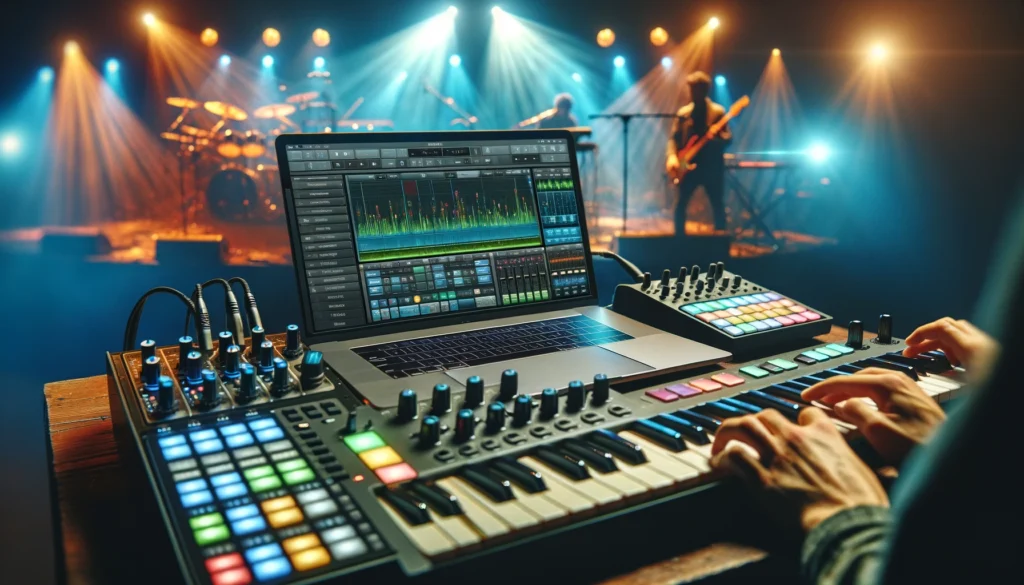
In addition to assigning MIDI channels to play software instrument strips, MainStage allows you map MIDI signals from keyboards, pedals or control surfaces to trigger a variety of utility functions within the app itself.
This is helpful to activate important workflow actions easily handsfree while performing on stage, without having to stop playing to click around with your mouse.
Some common examples of handy MIDI mapping in MainStage would be assigning a piano sustain pedal to globally switch which Patch is active so you can change synth tones handsfree, or assigning MIDI knobs to adjust parameters like Reverb Depth that apply across multiple channel strips.
Using a MIDI foot controller, you can remotely change to completely different Concert presets comprising alternative combinations of instruments and effects chains optimized for certain songs in your setlist.
MIDI Program Change messages are commonly used to trigger these Patch changes.
Beyond just instrument switching, using a customizable MIDI surface like Launchpad, you can map buttons to toggle between different Scenes in MainStage that apply varying effects settings.
For example,Scene 1 could be a clean piano treatment while Scene 2 applies distortion for aggressive parts of a song.
This allows dramatic dynamic changes during a live show, synchronized to MIDI timecode.
With some imaginative MIDI mapping combined with MainStage’s robust architecture, the possibilities are endless for crafting an engaging, ever-evolving performance rig tailored closely to your needs as an electronic musician or band.
MainStage MIDI Workflow Tips

When building a new MainStage template from scratch, begin with your master MIDI keyboard as the main controller to trigger instrument and effects plugins assigned to channel strips.
Select appropriate synth/piano/guitar plugins within channel strips – match instrument type to your master keyboard MIDI transmit channel so you straightway hear these tone generators respond as you play.
Turn on Software Monitoring in your DAW if hosting virtual instruments there bi-directionally integrated with MainStage.
Use your master keyboard’s pitch/mod controllers to tweak parameters like filters, distorion or reverb depth for installed Plugins to design some dynamic sounds.
Mix and balance levels between plugins on different channel strips.
Once initial instruments respond satisfactorily, save this as a MainStage Concert stored as your Template which can now be repeatedly refined.
To integrate additional MIDI keyboards, use MainStage Mapper to establish a one-to-one link between external keyboard zones and specific channel strips – this prevents overlapping note ranges triggering unintended instruments.
For vintage MIDI synths, determine their default transmit/receive channels and filter appropriately in instrument assignments.
Label shorten channel strip names clearly to identify keyboards/synths.
When adding MIDI foot controllers, use MainStage or Manufacturer MIDI mapping tools to connect pedals to precise actions like Sustain or Program Change messages.
Footswitches can also control plugin parameters or trigger channel mutes for dynamic mix changes live
Conclusion
In summary, MainStage offers tremendously flexible options for MIDI control, allowing performers to tweak instruments, effects, mixing and more in musically expressive ways from keyboards, guitars and hardware controllers.
If you feel limited sonically by stage piano presets or find physical amp/pedal setups restrictive, exploring MIDI control with MainStage unlocks new creative dimensions.
The software transforms static sounds into dynamic, customizable rigs controllable in real-time.
So don’t settle for the status quo – unlock greater artistic freedom using MIDI with MainStage today!
